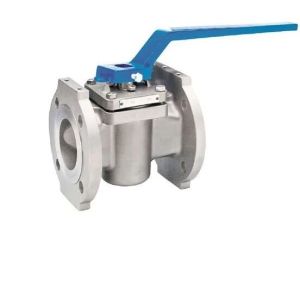Plug valves are essential components in various industries due to their ability to control fluid flow efficiently. They are widely used in the oil & gas, chemical, and water treatment industries because of their durability, tight sealing, and resistance to corrosion. Understanding their role in these industries can help in selecting the right valve for specific applications.
Understanding Plug Valves
Plug valves are quarter-turn valves that use a cylindrical or conical plug to regulate fluid flow. The plug inside the valve rotates within the body to allow or block the passage of liquids or gases. They are available in different materials, including metal and lined options such as PFA lined plug valves, which offer excellent chemical resistance.
Plug Valves in the Oil & Gas Industry
The oil & gas industry demands robust and reliable valves to handle high-pressure and high-temperature conditions. Plug valves are widely used in this sector due to their ability to control the flow of crude oil, natural gas, and refined petroleum products. They are often preferred for the following reasons:
- High pressure and temperature resistance: These valves can withstand extreme conditions in drilling, refining, and pipeline applications.
- Leak-proof sealing: The tight shut-off mechanism ensures minimal leakage, preventing contamination and product loss.
- Corrosion resistance: PFA lined plug valves are used to handle aggressive chemicals and prevent internal corrosion.
Plug valves are commonly found in pipeline transmission systems, gas processing plants, and offshore drilling rigs, where they provide efficient flow control and enhance safety.
Plug Valves in the Chemical Industry
The chemical industry deals with highly corrosive and hazardous substances, making the selection of valves critical. PFA lined plug valves are specifically designed for this sector, offering superior protection against chemical damage. The key applications include:
- Handling corrosive chemicals: The lining prevents damage from acids, alkalis, and other reactive substances.
- Preventing contamination: The non-stick properties of PFA lined plug valves reduce the risk of chemical buildup and contamination.
- Ensuring safety: Plug valves offer reliable sealing, minimizing the chances of hazardous leaks and emissions.
Chemical plants use these valves in processing units, storage tanks, and transportation pipelines to maintain operational efficiency and safety.
Plug Valves in the Water Treatment Industry
Water treatment plants require efficient valves to regulate the flow of water, chemicals, and waste materials. Plug valves are commonly used in this industry due to their robust design and low maintenance. Their benefits in water treatment include:
- Reliable flow control: Ensures smooth regulation of clean and wastewater.
- Durability: Withstands continuous operation in filtration and distribution systems.
- Corrosion resistance: PFA lined plug valves protect against chemical additives used in water purification.
These valves play a crucial role in desalination plants, sewage treatment facilities, and drinking water distribution networks, helping maintain a safe and efficient water supply.
Choosing the Right Plug Valve
When selecting a plug valve, it is essential to consider factors such as:
- Operating conditions: Pressure, temperature, and flow requirements should be evaluated.
- Material compatibility: PFA lined plug valves are ideal for corrosive environments, while metal options work well for high-pressure applications.
- Maintenance needs: Some plug valves require periodic lubrication, while lined versions offer a maintenance-free design.
Conclusion
Plug valves play a crucial role in the oil & gas, chemical, and water treatment industries by ensuring efficient flow control and enhancing operational safety. Their ability to withstand harsh environments and handle various fluids makes them an essential component in industrial applications. Whether using standard plug valves or PFA lined plug valves, selecting the right type ensures better performance, longevity, and cost-effectiveness in these industries.





Comments